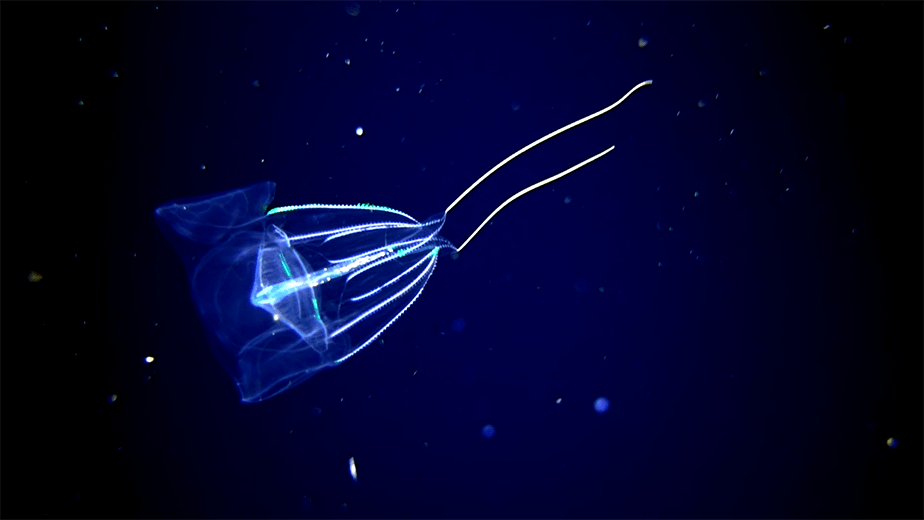Have you ever gone night diving? Blackwater diving, also known as pelagic diving, is similar to night diving but it can also be a lot more nerve-wracking. Instead of exploring the shallow reefs in the dark, blackwater divers are in the open ocean totally enveloped in darkness. And that’s where the magic happens. During the diurnal migration (the world’s largest marine life migration), a massive amount of creatures ascend from the depths to feed and breed under the cover of darkness. It’s your job to be there to witness it when it happens.
Your only reference point in the dark are the lights of other divers and a buoy with a line with lights attached at different depths so it is highly visible. You will also be tethered to the boat line and armed with a flashlight. Floating in what feels like open space, divers can witness some of the most exotic, wonderfully weird, alien-looking marine life swim by in a pitch black backdrop. After the dive is over, you simply swim towards the lighted buoy, ascend near it, and shine your primary dive light and backup dive light on your chest until the boat comes and picks you up.
That’s blackwater diving in a nutshell. However, we’ve barely scratched the surface on this wonderful form of diving. If you want to learn all of the different types of blackwater diving, the different kinds of creatures you’ll encounter, and the best places to find them, then continue reading and we’ll discuss them in further detail.
How does blackwater diving work?
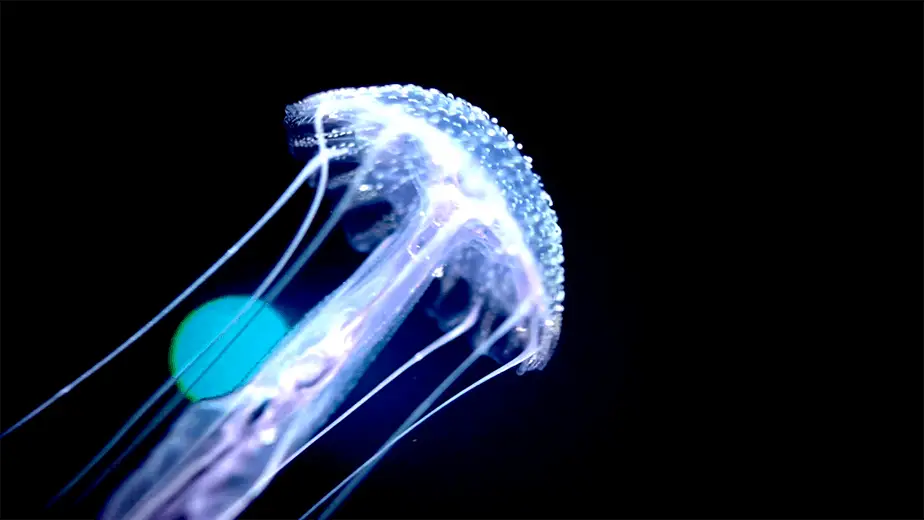
As we mentioned, blackwater diving is basically a type of night diving but with one major difference. Instead of exploring a shallow reef with a torch, blackwater divers focus on finding interesting creatures in the water column. The creatures swim up from the depths, attracted to the high-powered lights that simulate the moon.
The three main types of blackwater dives are: open ocean, near reef, and bonfire. Each type of blackwater dive is differently organized.
How to prepare for a blackwater dive
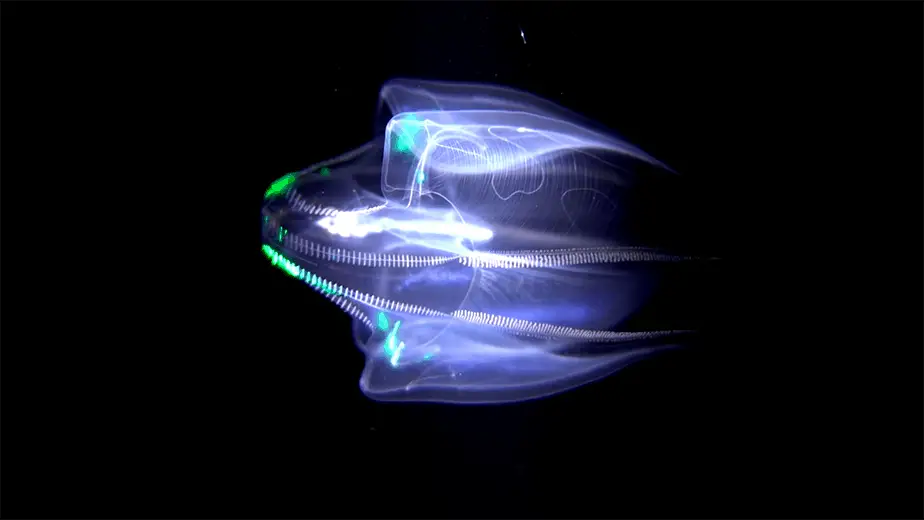
In order for a black water dive to be safe, weather conditions have to be near-perfect. When you are diving under the cover of darkness in the open ocean, it’s really easy for something to go wrong. Boat operators need to consider not just the current and wave action, but also the wind speed and direction. Thankfully, this is something for the dive shops to worry about, but it’s good to know a little bit about what’s going on behind the scenes.
Regardless which blackwater dive you’re doing, you need to attend a special briefing. You should have sufficient experience with night diving, because blackwater diving is even more nerve-wracking and skill intensive. Similar to night diving, you should have one primary dive light and one spare light; camera lighting can double as a spare also.
Every diver should have their own primary dive light; no sharing. If at any point your primary dive light fails, the dive is over and you should surface and return to the vessel. Your spare backlight is only to be used to help you ascend, NOT to continue your dive. If that fails too, good luck getting found in the dark while wearing a black wetsuit. So far, the procedure is exactly the same as night diving, but here’s where things start to change.
For a blackwater dive, you should wear a full exposure suit because you will encounter many stinging organisms. Additionally, buoyancy and orientation can be extremely challenging at night, but even more during a blackwater dive. Since you will be floating in almost total darkness, you don’t have many reference points to work with and can lose sense of direction and depth.
Thus, you should monitor your depth gauge regularly. Also keep an eye out for the location of other divers and the lighted buoy to ensure you haven’t drifted too far away. A common mistake during a blackwater dive is focusing too hard on the creatures around you that you exceed depth limits or accidentally surface.
The lights that attract the creatures will already be in the water for some time before you dive in so that there will already be marine activity around you, maximizing your experience.
Open ocean blackwater diving
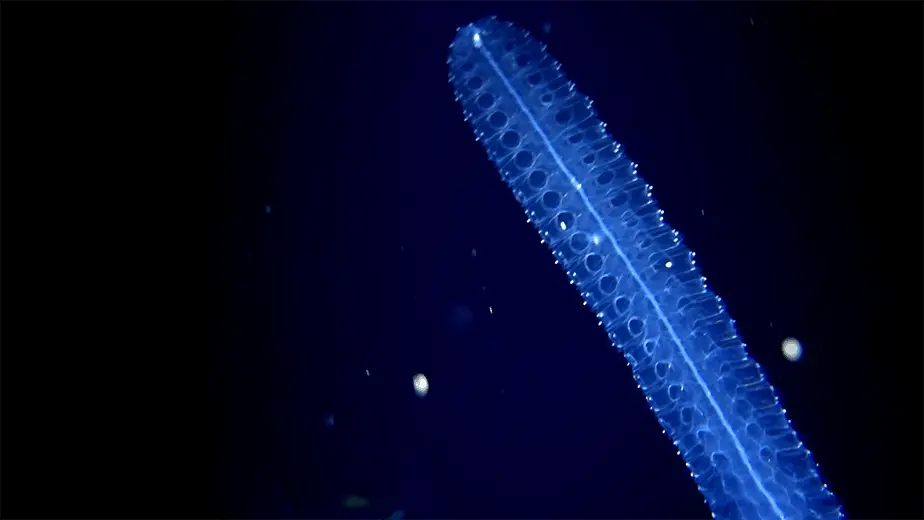
Open ocean blackwater dives are sometimes referred to as offshore blackwater dives. Like the name suggests, these dives are done far offshore, over abyssal depths, and from a boat. With the ocean floor located thousands of feet away, and darkness all around you, it truly feels like you are floating in space.
The ocean and wind conditions need to be calm for such a dive. Strong lights are first suspended from the boat to a depth of 9-15 m (30-50 ft) where it begins to attract the creatures from the depths while the divers prepare for their dive on the boat.
Next, each diver gets their own drop line, which has another 1 m line extending from it. There is a clip at the end of the line that connects to your BCD. This lets divers descend, ascend, and move around their dedicated drop line. Each line is separated by a distance of 1.5-2 m so there is enough room for each diver.
It might seem weird to be attached to the dive boat, however since you’re floating freely in the open ocean, this is an important safety measure. Since the boat is also free floating, it’s possible that either you or the boat drifts away and gets separated, which is not an ideal situation to have in the pitch black darkness of night, hence a safety line.
Once divers are prepared, they just need to enter the water, clip to their assigned drop line, descend, and experience what blackwater diving has to offer. It’s important not to get tangled in another diver’s line.
As long as you keep a close watch on your depth gauge and other divers, you should be fine. We can’t think of an easier dive in terms of physical exertion. At the end of the dive, swim to the buoy and ascend near it. Shine your light on your chest so the boat can locate you, and you will be picked up and assisted back into the boat.
Near reef blackwater diving
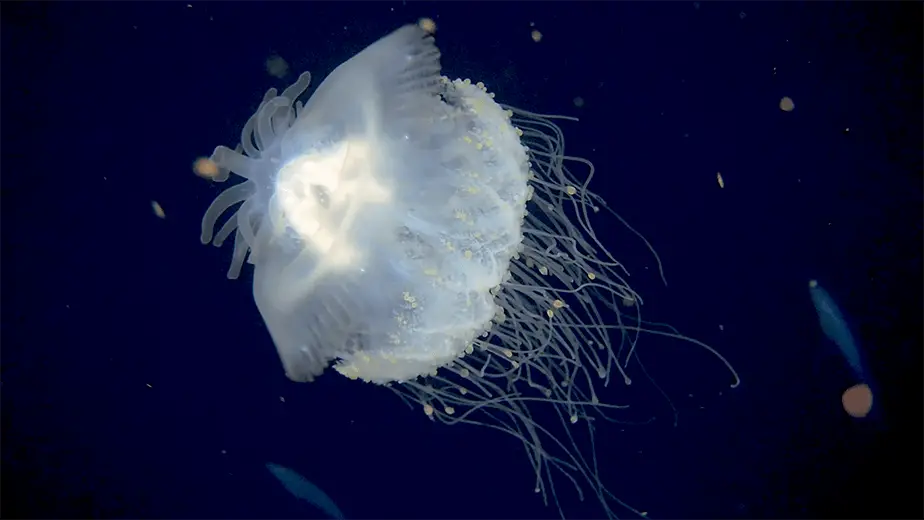
Next, reef blackwater diving is the most challenging of the blackwater dives so it’s essential that you keep close to your dive buddy or assigned guide. A dive site is selected, typically on a deep wall where the open ocean is adjacent. Ideally, there will also be a small cut in the reef to reduce the current.
The lights that attract marine life are placed in a group at a depth of 5-10m on the wall facing outward to the open ocean. Then, you and your group are dropped off by tenders so that you can explore the water column without being tied to the boat. Since you’re close to the reef, you should use the lights on the reef as a reference point (a luxury open ocean diver pelagic night divers don’t have) so you can orient yourself.
With that said, this dive is the one where first-timers frequently have the most buoyancy issues due to a general lack of visual reference and no safety line to secure them to anything. However, as long as you stay vigilant, you will be in for a good time.
Bonfire blackwater diving
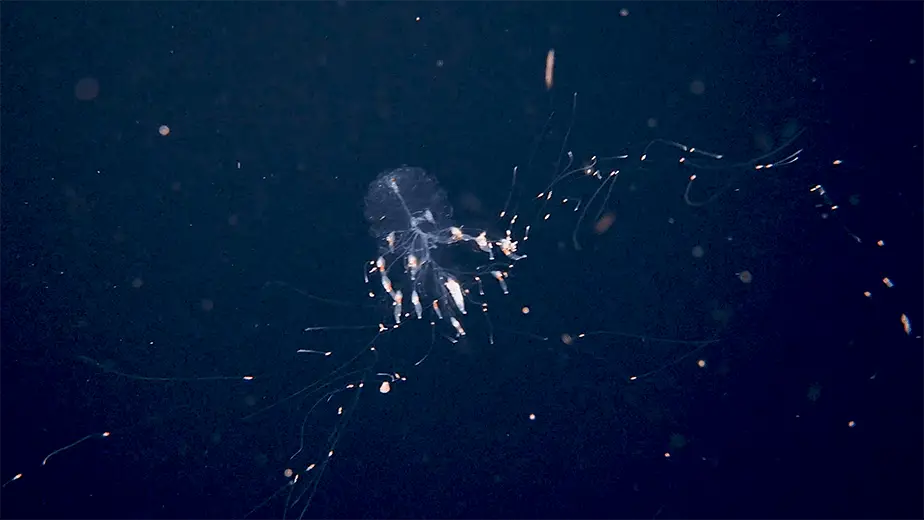
Lastly, the bonfire blackwater dive is the easiest of the blackwater dives so it makes a good first-time blackwater diving experience. First, a bonfire dive is done in shallower water, around 9-18 m deep (30-60 ft), in an area with little to no currents.
In the other blackwater dives, the goal is to attract the creatures from the depths using lights that simulate the moon. In a bonfire blackwater dive, the goal is to attract creatures from the reef itself, and maybe a few from the water column as well.
Artificial lights are placed around the dive site pointing up to attract the creatures. After some have come out, it’s time for you to jump in. Since the dive site is so shallow, it’s better to stay away from the bottom where you can potentially kick up silt. Instead, you should explore the water column close to the lights to see the most marine life. You can also combine this experience with a regular reef night dive.
Creatures you can see on a pelagic night dive
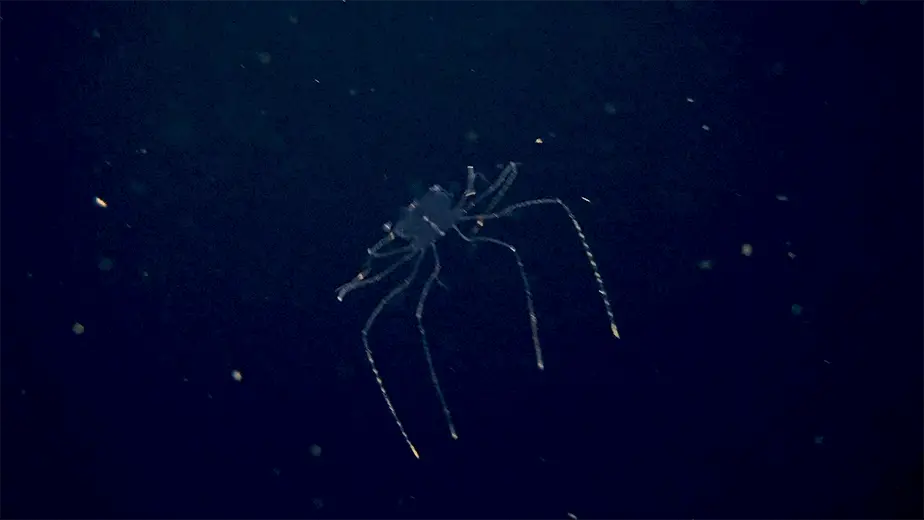
The marine life you’ll encounter on a blackwater dive are highly diverse. Some marine life only comes out at night, so daytime divers will never see these creatures. Furthermore, some of these creatures are normally found at deep depths, and are only coming out because they have been attracted by the bright lights. In other words, the creatures you will see on a blackwater dive are highly exclusive, and you will probably never see them anywhere else.
Most creatures in a blackwater dive are small (3-6 cm) and are typically planktonic. Many of these are just fish larvaes or juvenile creatures of some sort. You will see worms, jellyfishes, squids, octopuses, salps, and seahorses. Occasionally, larger pelagic creatures will also be attracted to the lights. Your dive guide will assess how aggressive these creatures are and determine if the dive is safe to continue or not.
Best locations for blackwater diving
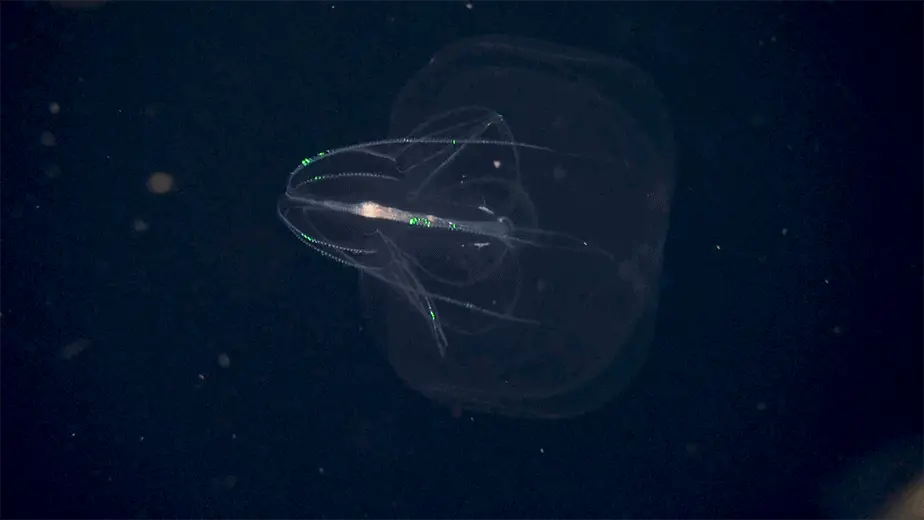
Just going out on any old night dive is not the same as blackwater diving. There are certain topographic factors that create the optimal environment for a diurnal migration. True “blackwater diving” means going out at night over the deep ocean during the great migration where billions of marine life are making this great journey. Here are the best places to witness this.
Anilao, Philippines
For all blackwater dives, you are expected to have at least 50 dives under your belt, since you’ll be drifting in the pitch black open ocean; it’s nerve-wracking inexperienced divers. However, once you get over your initial worries, you’ll be treated to pelagic seahorses and blanket octopus off Anilao in the Philippines. The real exciting part of blackwater diving is seeing the creatures that you’ve never identified before.
Lembeh, Northern Sulawesi
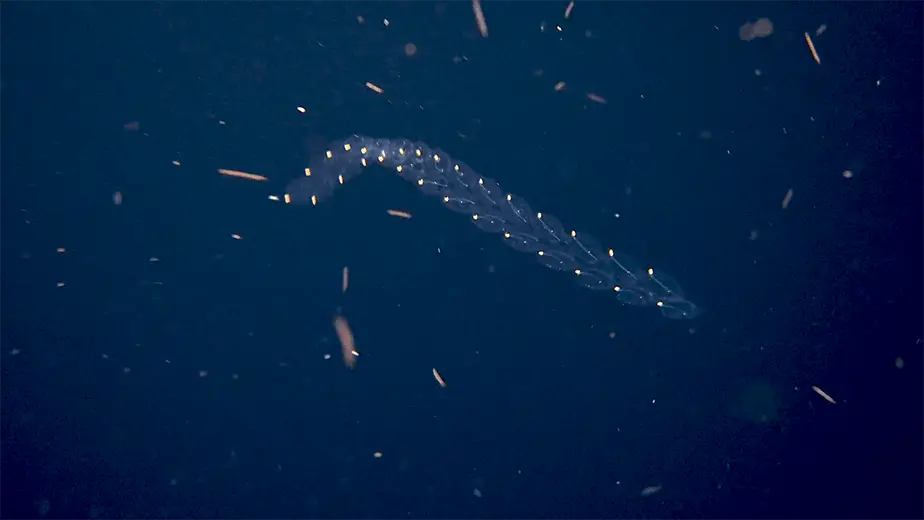
Lembeh in Northern Sulawesi is famous for being home to the weirdest critters, and the critters you can find in the blackwater dives in this area look downright alien. The creatures look like something out of a fantasy or alien movie with their many arms, translucent glow, and other unique characteristics. Think: larval flounder fish, flashing translucent jellyfish, freaky fireworms, and much more.
Palau
Just offshore of Palau, you can find dramatic drop-offs that descend over 1,000 m which give blackwater dives a great opportunity to see hordes of deep water squid and larvae rise close to the surface to feed and breed. Look closely, and you’ll also find hundreds of jellyfish pulsating and flashing as they chase down zooplankton.
Witness squid darting around as they chase shrimp hitching a ride along jellyfish-like hot balloons and small crustaceans. For the greatest critter count, go blackwater diving in Palau when there is no moon, or during the new moon. (Note: studies have shown that marine organisms will not migrate as far up the water column on nights with a full moon.)
Kona, Hawaii
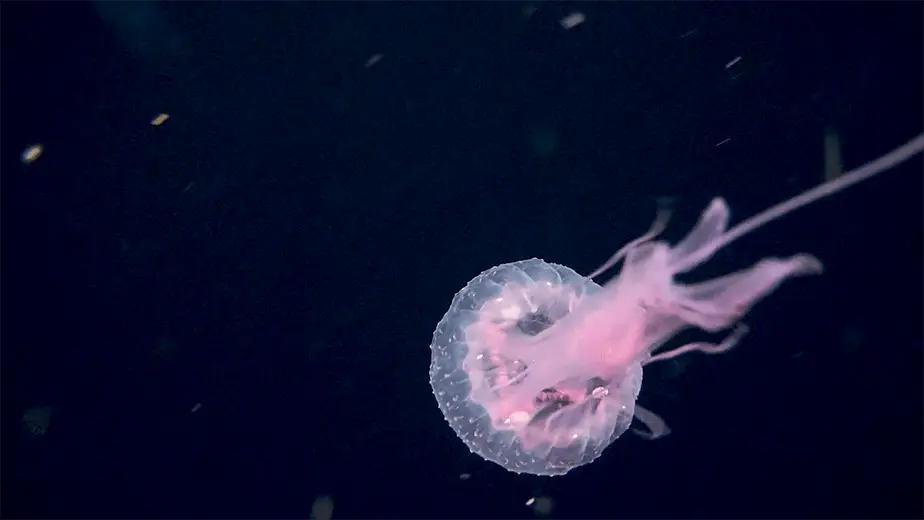
Kona, Hawaii is the original blackwater diving spot. Here, you can find an ocean of weird creatures, from larval octopuses, flounders, lobsters, to siphonophores or even the odd shark if you’re lucky. In the background, listen for the squeals of pods of dolphins hunting. All of this contributes to an amazing night diving experience. You can also combine blackwater diving with manta ray night diving (or snorkeling). There’s much to do at night in the ocean in Kona.
Pico, Azores
The dive site in Pico, Azores is quite exclusive; you need the weather to be on your side for this to be possible. However, those who are lucky enough are in for a treat. The shores of Pico have dramatic drop-offs over 3,000 m, which is where many unique creatures reside. Once the action unfolds, you will see all kinds of freaky alien-like translucent creatures and might even hear a sperm whale’s clicks and clatters.
Parting words
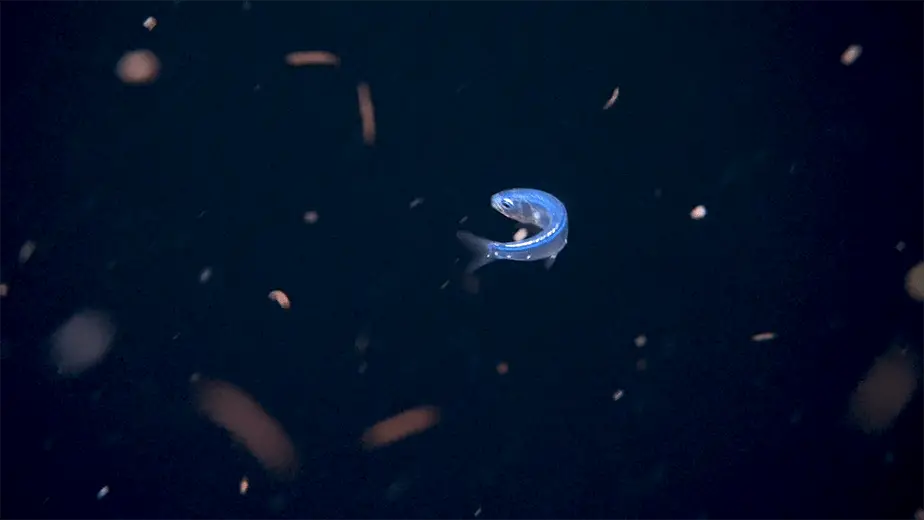
Diving by day has its share of thrills, but diving at night is an entirely different beast. If you are an underwater photographer, blackwater diving is a must (for similar reasons, check out muck diving). It feels like you’re floating in space while looking for minute pelagic creatures so you can take the perfect macro shot.
The lack of reference points make pelagic diving difficult and nerve-wracking at first (people can suddenly feel very claustrophobic). For this reason, experience with diving, particularly night diving is a must to keep your nerves calm. Many blackwater divers love the experience because the creatures they see are so unreal, and the photographs are almost unbelievable.
If you want to try a type of diving that is unique, and is as close to floating in space as it gets, then give blackwater diving a try.
Photo Credits: Pawlik Lab, Kona Honu Divers

